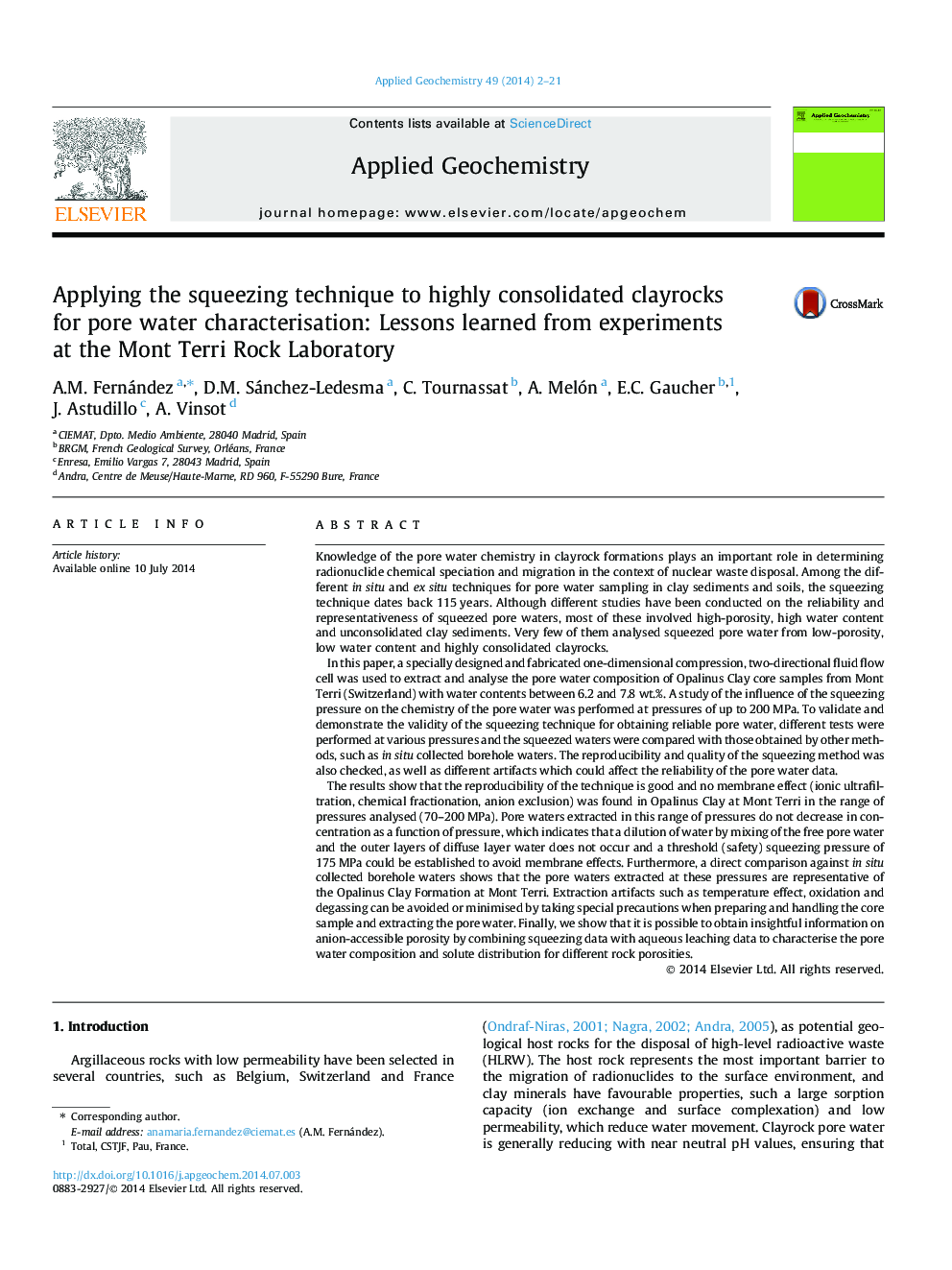| کد مقاله | کد نشریه | سال انتشار | مقاله انگلیسی | نسخه تمام متن |
|---|---|---|---|---|
| 4435756 | 1620242 | 2014 | 20 صفحه PDF | دانلود رایگان |
• Critical assessment of the squeezing technique for pore water extraction in consolidated clayrocks.
• Evolution of the chemistry of extracted water as a function of pressure.
• Evaluation of artifacts on pore water composition.
• Determination of the anion-accessible porosity by means of squeezing and leaching data.
Knowledge of the pore water chemistry in clayrock formations plays an important role in determining radionuclide chemical speciation and migration in the context of nuclear waste disposal. Among the different in situ and ex situ techniques for pore water sampling in clay sediments and soils, the squeezing technique dates back 115 years. Although different studies have been conducted on the reliability and representativeness of squeezed pore waters, most of these involved high-porosity, high water content and unconsolidated clay sediments. Very few of them analysed squeezed pore water from low-porosity, low water content and highly consolidated clayrocks.In this paper, a specially designed and fabricated one-dimensional compression, two-directional fluid flow cell was used to extract and analyse the pore water composition of Opalinus Clay core samples from Mont Terri (Switzerland) with water contents between 6.2 and 7.8 wt.%. A study of the influence of the squeezing pressure on the chemistry of the pore water was performed at pressures of up to 200 MPa. To validate and demonstrate the validity of the squeezing technique for obtaining reliable pore water, different tests were performed at various pressures and the squeezed waters were compared with those obtained by other methods, such as in situ collected borehole waters. The reproducibility and quality of the squeezing method was also checked, as well as different artifacts which could affect the reliability of the pore water data.The results show that the reproducibility of the technique is good and no membrane effect (ionic ultrafiltration, chemical fractionation, anion exclusion) was found in Opalinus Clay at Mont Terri in the range of pressures analysed (70–200 MPa). Pore waters extracted in this range of pressures do not decrease in concentration as a function of pressure, which indicates that a dilution of water by mixing of the free pore water and the outer layers of diffuse layer water does not occur and a threshold (safety) squeezing pressure of 175 MPa could be established to avoid membrane effects. Furthermore, a direct comparison against in situ collected borehole waters shows that the pore waters extracted at these pressures are representative of the Opalinus Clay Formation at Mont Terri. Extraction artifacts such as temperature effect, oxidation and degassing can be avoided or minimised by taking special precautions when preparing and handling the core sample and extracting the pore water. Finally, we show that it is possible to obtain insightful information on anion-accessible porosity by combining squeezing data with aqueous leaching data to characterise the pore water composition and solute distribution for different rock porosities.
Journal: Applied Geochemistry - Volume 49, October 2014, Pages 2–21
